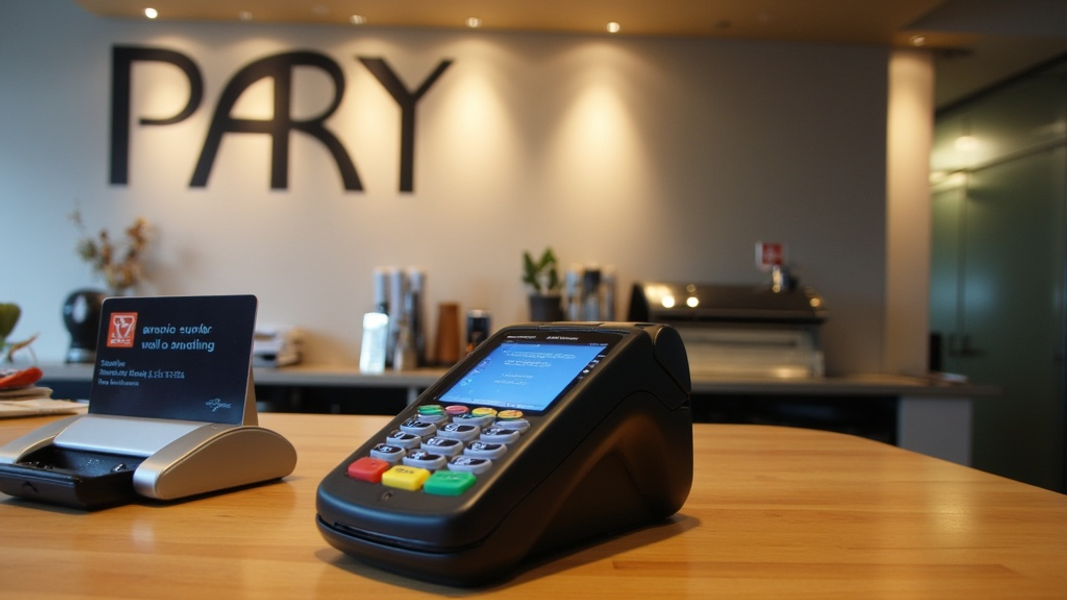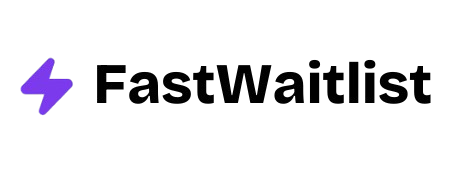
Did you know that 95% of new products fail? But with the right prelaunch strategy, you can boost your chances of success. This guide will walk you through proven prelaunch tactics to build buzz, get useful feedback, and set your product up for a great launch.
What is Product Prelaunching?
Prelaunching a product means starting marketing efforts before the official release. It's a key step in bringing a new product to market. The main goals are to create interest, gather early feedback, and build a list of potential customers.
A good prelaunch campaign usually runs for 1-3 months before the actual launch date. This gives you enough time to build excitement without losing momentum.
Why Prelaunch Matters
Prelaunching is not just a nice-to-have - it's often the difference between success and failure. By starting early, you can test your product idea, refine your messaging, and build a group of eager customers ready to buy on day one.
Think of prelaunching as a dress rehearsal for your main launch. It lets you work out any kinks in your marketing and product before the big day. This can save you from costly mistakes and help you make a strong first impression when you officially launch.
Benefits of Prelaunching Your Product
Prelaunching your product comes with several key benefits that can set you up for long-term success.
Generate Buzz and Anticipation
One of the main perks of prelaunching is the buzz it creates. When done right, a prelaunch campaign can get people talking about your product before it's even available. This word-of-mouth marketing is priceless.
You can use teasers, sneak peeks, and exclusive previews to pique interest. As people start to talk about your upcoming product, it creates a snowball effect of anticipation. This buzz can translate into a strong launch day with lots of early sales.
Gather Customer Feedback
Prelaunching also gives you a chance to get feedback from potential customers. This input can be gold for refining your product or marketing approach.
You might find out about features people want that you hadn't thought of. Or you might learn that your pricing is off. Getting this feedback early lets you make changes before your full launch, increasing your chances of success.
Build an Email List
A solid email list is one of the most valuable assets for any business. Prelaunching is a great way to start building this list early.
By offering something of value - like early access or a special discount - in exchange for an email address, you can build a list of interested prospects. These are people who have shown interest in your product and are more likely to buy when you launch.
Essential Elements of a Prelaunch Strategy
To make the most of your prelaunch, you need a solid strategy. Here are the key elements to focus on:
1. Define Your Target Audience
Before you start any marketing, you need to know who you're talking to. Create detailed buyer personas that describe your ideal customers. Think about their age, job, interests, and most importantly, the problems they face that your product can solve.
Understanding your target audience helps you craft messages that resonate. It also guides your choices on where to focus your marketing efforts. For example, if your target audience is young professionals, you might focus more on LinkedIn than Facebook.
2. Craft Your Unique Value Proposition
Your Unique Value Proposition (UVP) is a clear statement that describes the benefit of your product, how you solve your customer's needs, and what sets you apart from the competition. It's the core of your marketing message.
To create a strong UVP, focus on the main problem your product solves. How does it make your customer's life better or easier? What can they do with your product that they couldn't do before? Make sure your UVP is clear, specific, and easy to understand.
3. Set Clear Goals and KPIs
To know if your prelaunch is successful, you need to set clear goals and Key Performance Indicators (KPIs). These might include:
- Number of email signups
- Social media engagement (likes, shares, comments)
- Press mentions
- Beta tester signups
Choose KPIs that align with your overall business goals. For example, if your main goal is to build a customer base, focus on email signups and beta tester recruitment.
10 Proven Prelaunch Marketing Tactics
Now that you have the basics in place, let's dive into specific tactics you can use to prelaunch your product.
1. Create a Coming Soon Landing Page
A "coming soon" page is often the first point of contact between your product and potential customers. It should be simple, eye-catching, and clearly communicate your UVP.
Key elements to include on your landing page:
- A compelling headline that states your UVP
- A brief description of your product and its benefits
- An email signup form
- A countdown timer to create urgency
- Social media links to help spread the word
Tools like Unbounce or Leadpages can help you create professional-looking landing pages quickly.
2. Start an Email List
Email marketing is still one of the most effective ways to reach customers. Start building your list as soon as possible.
Offer something valuable in exchange for email addresses. This could be early access to your product, a special launch discount, or exclusive content related to your product.
Use email automation tools to set up a series of welcome emails for new subscribers. These emails can provide more information about your product, share your brand story, and keep subscribers engaged until launch day.
3. Leverage Social Media Teasers
Social media is a powerful tool for creating buzz around your upcoming product. Each platform has its strengths, so tailor your approach accordingly.
On Instagram, use high-quality images and short videos to showcase your product. On TikTok, create fun, engaging content that highlights your product's features. On Twitter, share quick updates and interact with potential customers.
Consider running a user-generated content campaign. Ask followers to share how they would use your product or what problem it would solve for them. This not only creates engagement but also gives you valuable insights into your audience's needs.
4. Run Targeted Ads
Paid advertising can help you reach a wider audience quickly. Platforms like Facebook Ads and Google Ads offer powerful targeting options to reach your ideal customers.
Start with a small budget and test different ad formats and messages. Use retargeting to show ads to people who have visited your landing page but haven't signed up yet.
5. Collaborate with Influencers
Influencer marketing can be a great way to reach new audiences and build credibility. Look for influencers who align with your brand values and have an engaged following that matches your target audience.
You don't need to work with mega-influencers to see results. Micro-influencers (those with 1,000 to 100,000 followers) often have more engaged audiences and can be more cost-effective.

6. Host a Giveaway or Contest
Giveaways and contests can help spread the word about your product quickly. Choose a prize that's related to your product or appeals to your target audience.
Make sharing a requirement for entry to increase your reach. Tools like Gleam or Rafflecopter can help you manage your giveaway and pick winners fairly.
7. Secure Press Coverage
Getting mentioned in the press can give your product a big boost in credibility and reach. Start by creating a press kit with all the key information about your product.
Reach out to journalists and bloggers who cover your industry. Personalize your pitch and explain why your product would be interesting to their readers. Remember, it's about providing value to their audience, not just promoting your product.
8. Create Behind-the-Scenes Content
People love seeing how things are made. Create content that shows the development process of your product. This could be a video series documenting key milestones, interviews with team members, or blog posts explaining your design choices.
This type of content helps build a connection with your audience. It shows the human side of your brand and can create emotional investment in your product's success.
9. Offer Exclusive Beta Access
Offering beta access is a great way to get early feedback and create a group of brand advocates. Choose beta testers carefully - look for people who represent your target audience and are likely to provide thoughtful feedback.
Make sure to have a clear process for collecting and acting on feedback. Show your beta testers that you value their input by implementing their suggestions where possible.
10. Build a Referral Program
A referral program can help your prelaunch campaign spread organically. Offer incentives for people to share your product with their friends and colleagues.
These incentives could be early access, exclusive features, or discounts. Make sure the sharing process is as easy as possible. Tools like ReferralCandy can help you set up and manage a referral program.
Case Studies: Successful Product Prelaunches
Let's look at some real-world examples of successful product prelaunches to inspire your own strategy.
Robinhood's Waitlist Strategy
Robinhood, the commission-free stock trading app, used a clever waitlist strategy to acquire over 1 million users before launching.
They created a simple landing page that explained their unique value proposition: commission-free stock trading. But the real genius was in their referral system. Users could move up the waitlist by referring friends, creating a viral loop that spread the word quickly.
Key takeaways:
- Use scarcity (limited spots) to drive signups
- Make sharing easy and rewarding
- Keep your landing page simple and focused on one clear action
Harry's Prelaunch Referral Campaign
Harry's, the men's grooming company, used a referral campaign to gather 100,000 email addresses in just one week before their launch.
They created a two-page microsite. The first page collected emails. The second page encouraged people to share with friends to earn free products. The more friends someone referred, the bigger the reward they got.
Key takeaways:
- Offer tiered rewards to encourage more sharing
- Make the value proposition clear and compelling
- Use email to keep people engaged throughout the campaign
Coin's $50,000 Prelaunch Sales Day
Coin, a smart payment card, used scarcity and video marketing to drive $50,000 in preorders in just 40 minutes.
They created a high-quality product video that clearly explained the problem Coin solved and how it worked. They then offered a limited number of devices at a discounted preorder price. This created urgency and drove quick sales.
Key takeaways:
- Use high-quality visuals to explain your product
- Create urgency with limited-time or limited-quantity offers
- Clearly communicate the problem your product solves

Common Prelaunch Mistakes to Avoid
While prelaunching can set you up for success, there are some common pitfalls to watch out for:
Revealing Too Much Too Soon
It's important to create buzz, but don't give away all your product details right away. Keep some surprises for the actual launch to maintain interest.
Neglecting to Capture Leads
Every interaction with potential customers is a chance to capture a lead. Make sure you have clear calls-to-action and easy ways for people to sign up for updates.
Failing to Test Messaging and Offers
Don't assume you know what will resonate with your audience. Test different messages, offers, and even product features to see what gets the best response.
Ignoring Feedback
The feedback you get during your prelaunch is valuable. Make sure you have a system in place to collect, analyze, and act on this feedback.
Wrapping Up
Prelaunching your product is a crucial step in ensuring a successful launch. By building buzz, gathering feedback, and creating a base of interested customers, you set yourself up for strong sales from day one.
Remember, the key to a successful prelaunch is to provide value to your potential customers at every step. Whether it's through informative content, exclusive access, or special offers, make sure you're always giving people a reason to stay engaged with your brand.
Now it's time to put these strategies into action. Start planning your prelaunch campaign today, and set your product up for success!
